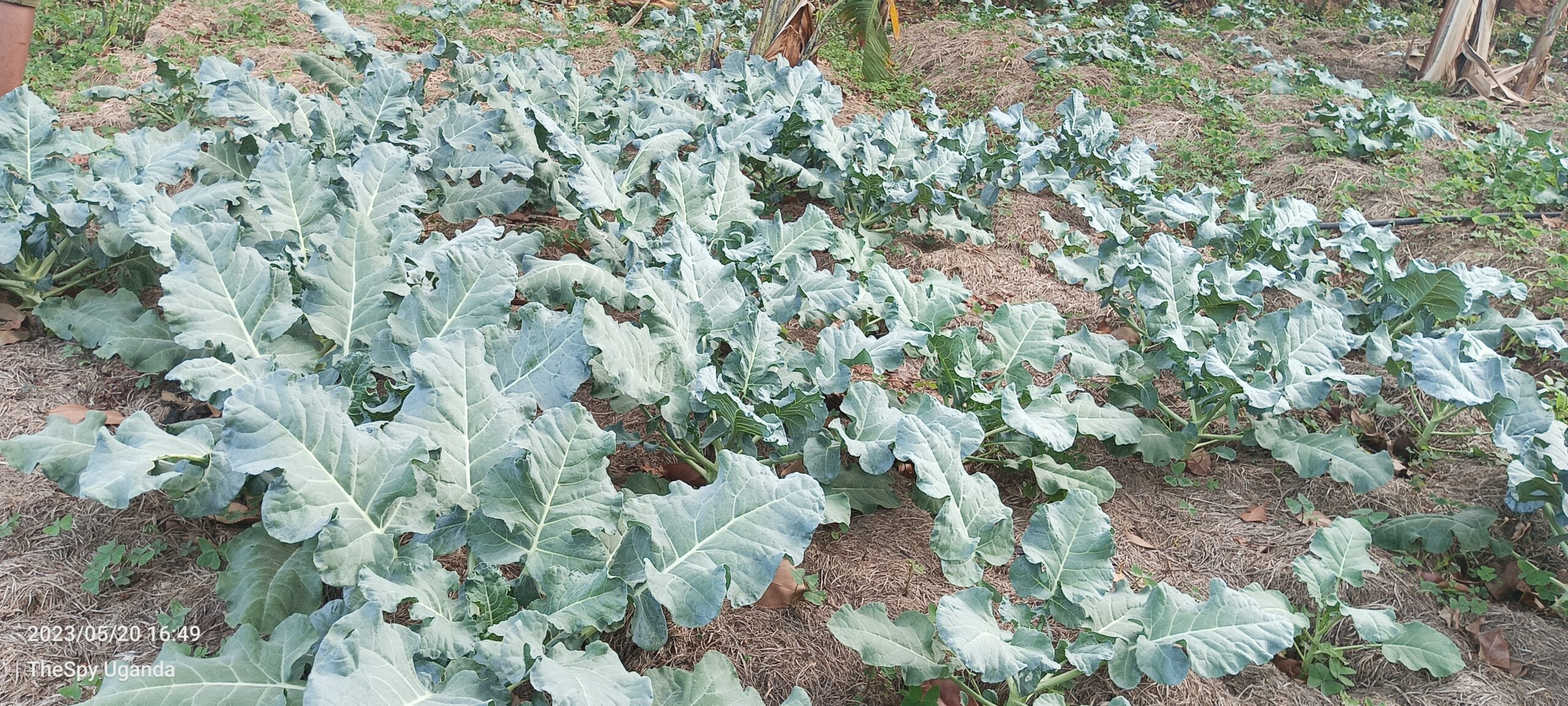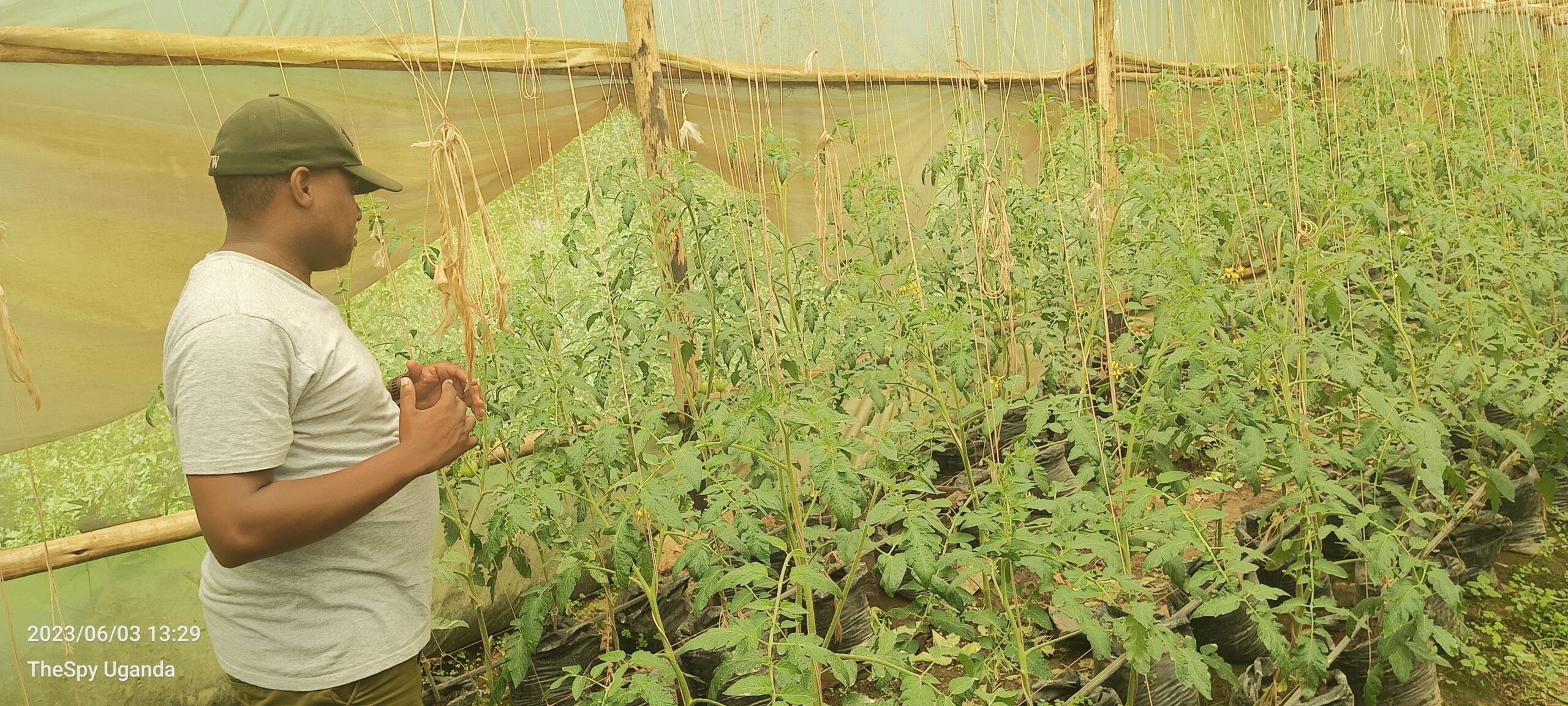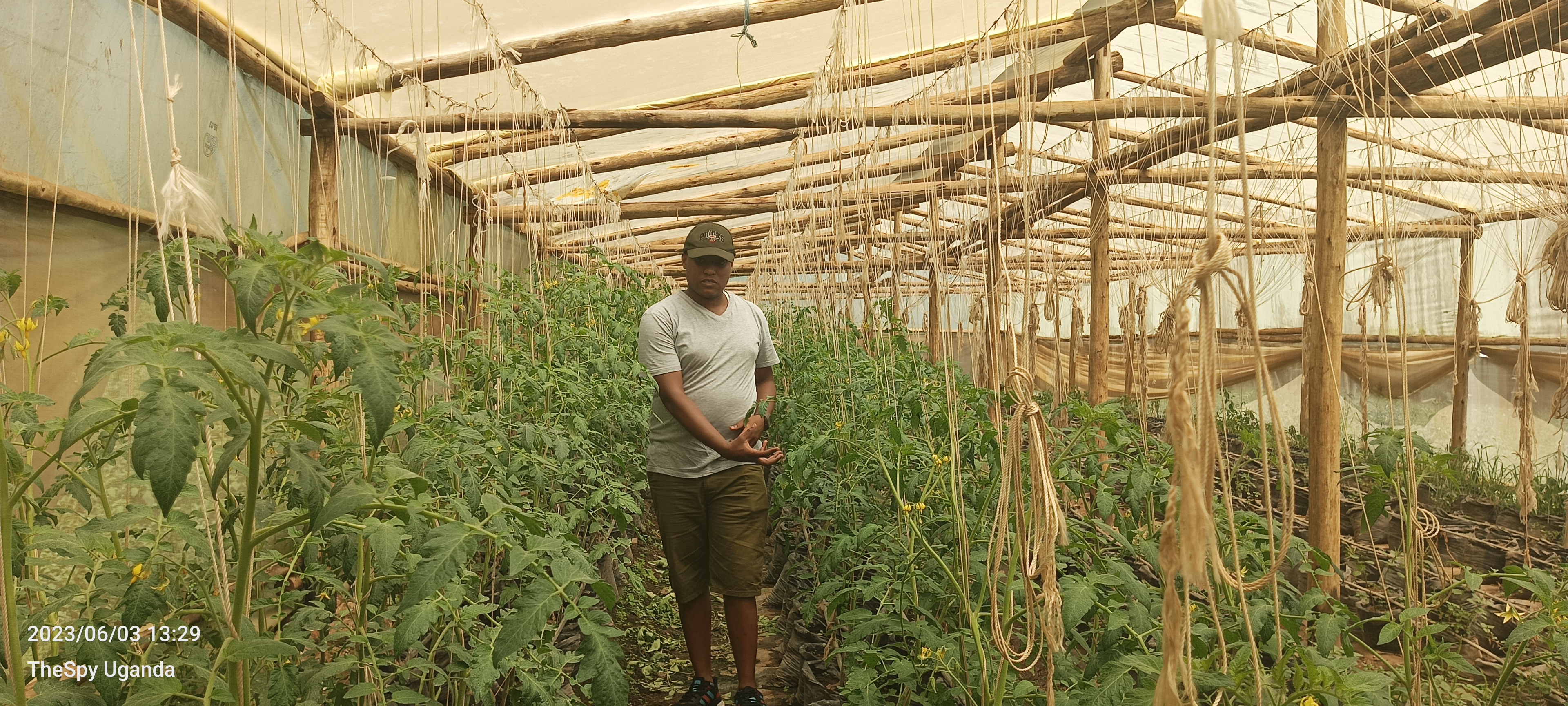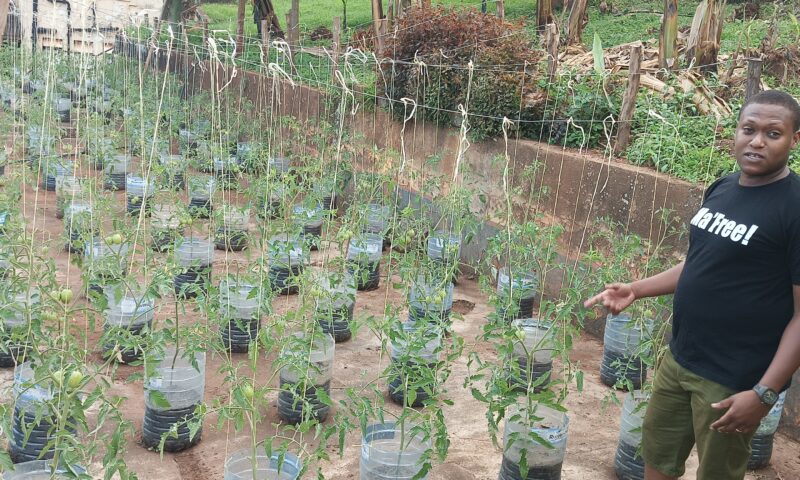By Andrew Irumba Katusabe
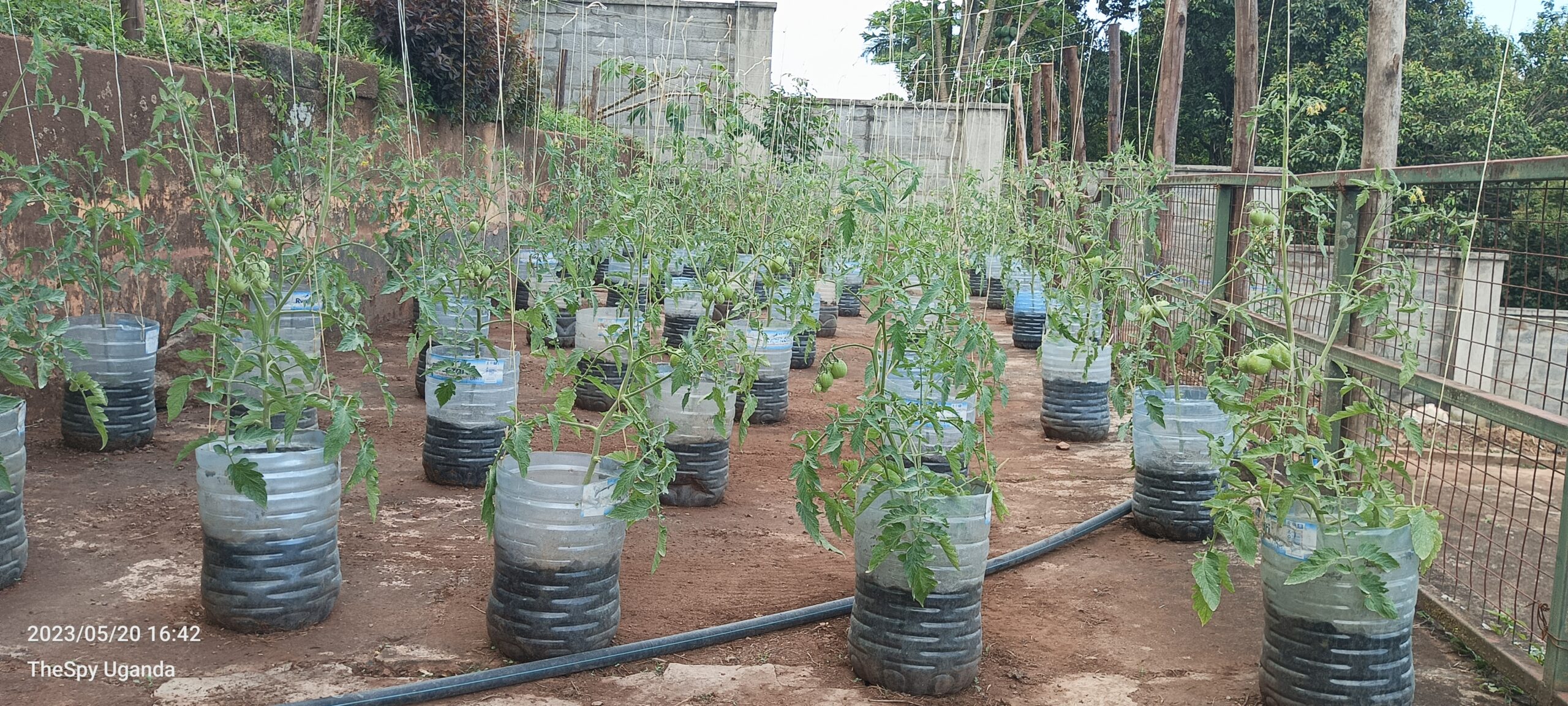
When he told me verbally that he has a garden in the leafy Kololo and that he fetches over shs10m per month I strongly disapproved his statement. To prove me wrong, Mr Laban Joshua Musinguzi, president Sustainable Development Goals (SDGs) at OPM last Saturday drove me to his posh home located in upscale Kololo, few meters from the airstrip. Now that should ring a bell in your head that it’s a leafy area, but someone’s son has a garden with in there.
Backyard farming is the practice of utilizing any kind of space you have in order to grow and produce your own food. Whether you have a large or small yard, or even a balcony, you are able to have a backyard farm.
Laban, with about 320 stems of tomatoes and 400 stems of broccoli, cabbages and sukuma week in his backyard and, what would be flower gardens, combined, earns him approximately shs10m per month, which translates Into shs30 million by the end of the season, which goes for about three months or more, especially for tomatoes and sukuma week that are harvestable weekly for a period of time.
With that experience, Laban argues that the boda boda riders in town who sale their land which is a fixed asset, only to buy a boda boda, which could get crashed in a day in an accident, or stolen is one of the things Government needs to look at critically. “This PDM money, if possible, part of it should have focused on dis-interesting youth from selling land and come to urban centres to ride boda bodas. Look at how the population of Boda boda riders is increasing every day in CBD. Ask yourself, who grows the food all these the would be farmers (bodas) eat? Can’t they grow that food, eat some and sale some?” argues Laban.
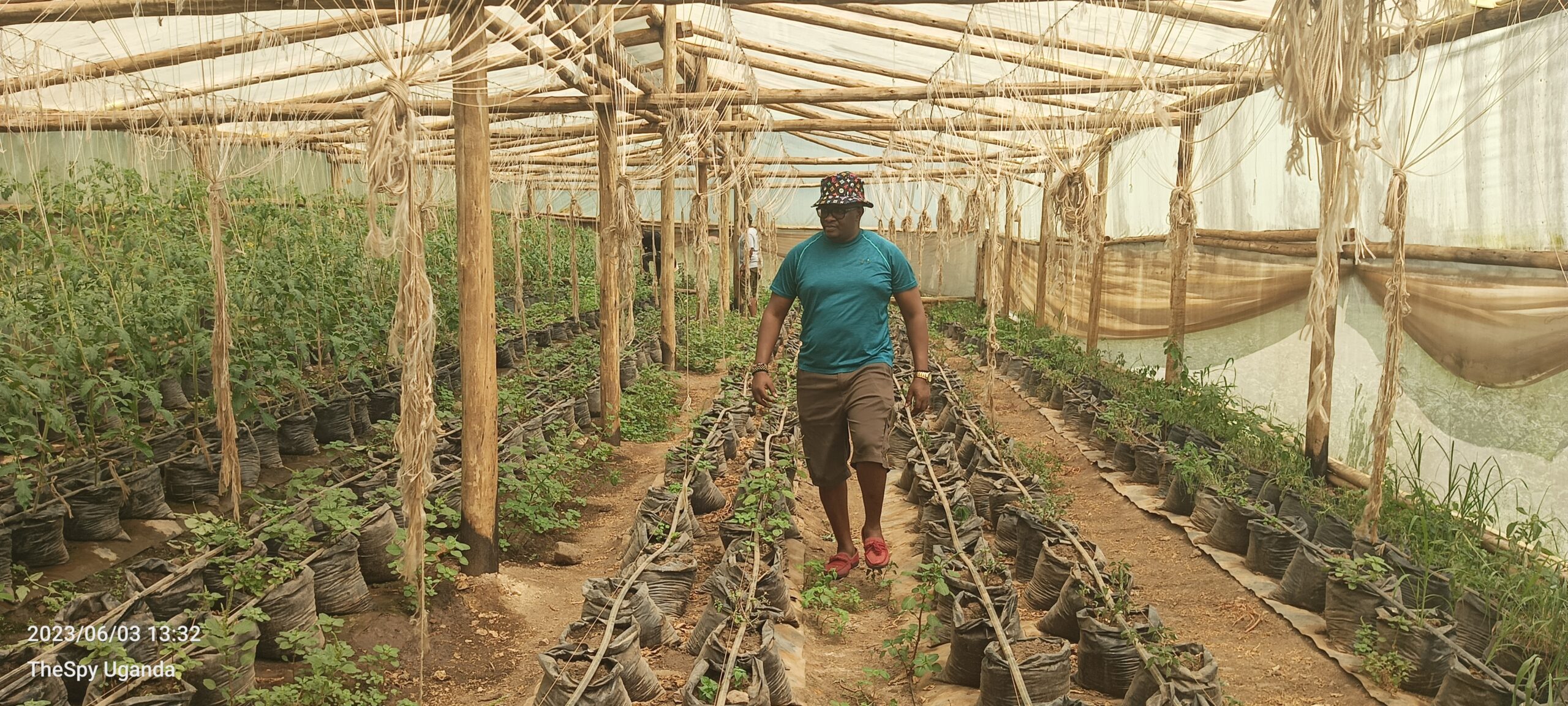
He says, if Government worked on the mindset of the youth, they could become the biggest producers of food and that would heavily solve the problem of food security and insecurity. “Remember a hungry soul is an angry soul. For as long as that soul is hungry, he will commit crimes like stealing in order to survive.
Laban also drove this reporter to his other farm out of town, which is located in Matuga,about 23 kms out of town, where he is practicing green house farming as a model farm to train the youth on smart farming that works.
Here, Laban applies latest smart farming technologies like Pafolated pipe for drip irrigation, green housing, pest control mechanisms, and crop rotation, among others on large scale.
Here, Soil is cooked and mixed with manure and sand soil. Sandsoil is a technic that allows some water to pass through and be lost in order for the crops to get only that, which it wants to grow.
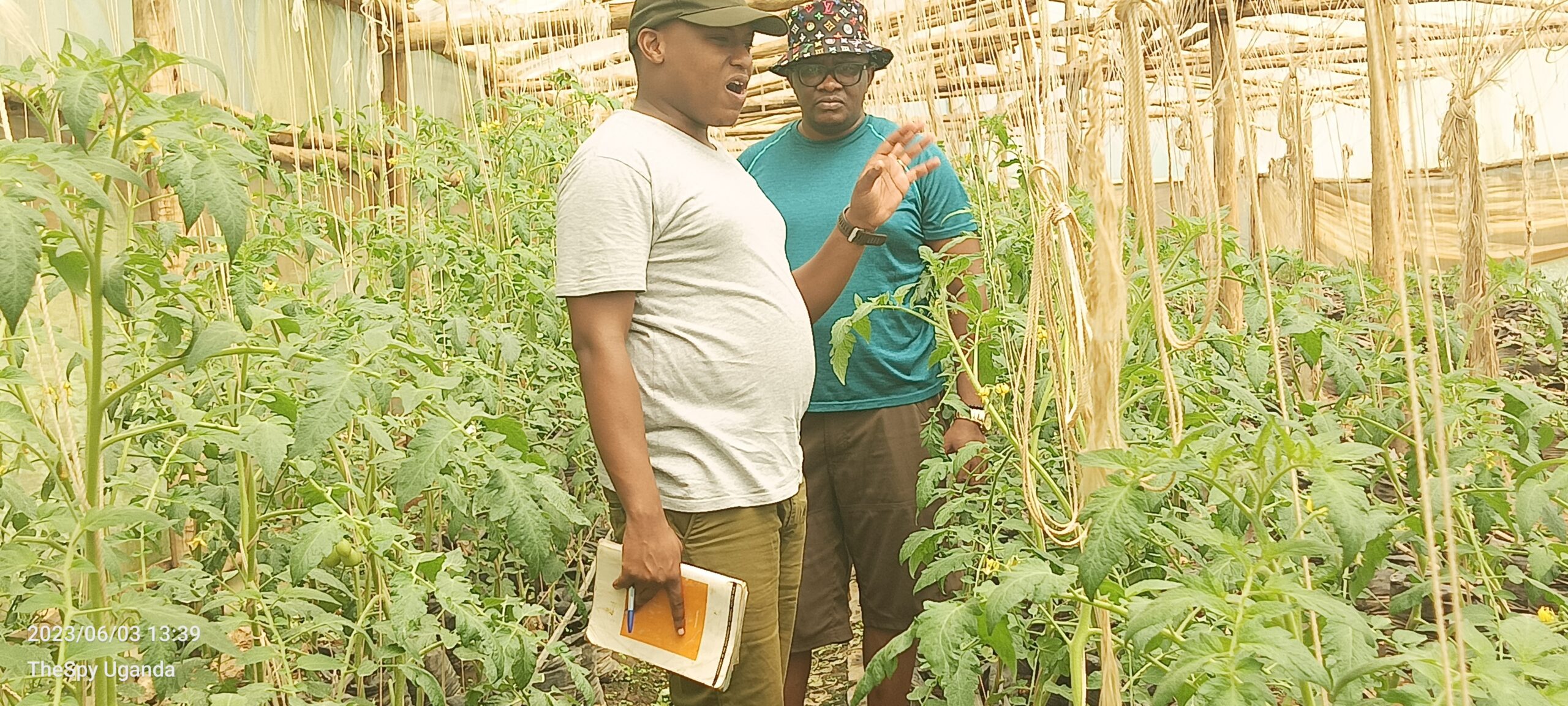
On our visit we found Broccoli, spinach, Cherry tomatoes, Anja FA tomatoes (800 in number) among others as those that were being grown Cherry tomatoes. Tomatoes are planted in line and in phases. “planting in phases enables you to harvest continuously for a long period of time. If you plant a lot at one go, most likely the high productivity at the same time will affect the price in commodity since they will be in larger supplies. So you need to control the production and keep the price high so you can benefit more,” he said.
Challenges
“We lack access to enough Capital. No bank is willing to borrow a farmer because your yields are on probability. Borrowers ask for collateral, which we don’t have. As Agro-fresh Company, we’re celebrating 5yrs. That shows that we’ve struggled to survive, the bottle necks notwithstanding,” he added.
Laban urged banks to extend agricultural credit facilities to enable fair distribution of opportunities across the spectrum.
He also said the construction of greenhouses is very expensive. A decent greenhouse costs about shs12m.
Laban said they are seeking for 100m boost to be able to meet their production demands at the model farm. He said this will maximize productivity, and by doing so they are contributing to food security, because food insecurity causes insecurity.
Below Here, We Take You Through A Tour On Both Farms Via Pictorial, Enjoy…